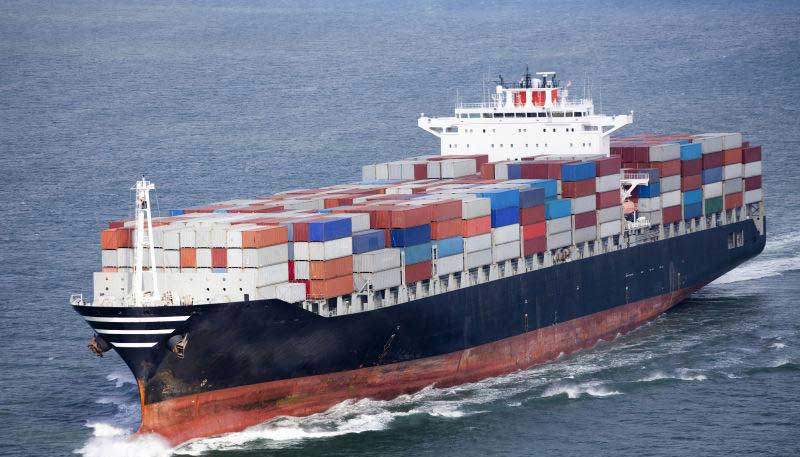Less-than-truckload (LTL) shipping is one of the best ways to save shipping costs without sacrificing service quality. But shipping freight class is a barrier for the enterpriser to join LTL freight shipment. This page breaks down the freight classification so you can respect regulations and benefit your cargo shipment. Keep reading to gain an ultra guide on the definition, freight class codes chart, and how to calculate freight class.
What is freight class?
To simplify the pricing of billions of products in LTL transportation, NMFC provided a standard shipping class parameter for cargo classification and quoting. The freight class code mainly works for interstate, intrastate, and cross-border trade transportation of LTL shipments. Complying with freight class can help facilitate smoother shipping and more efficient freight negotiation.
Freight class has dived into 18 classifications which cover from class 50 to class 500 depending on specific types of commodities. It is usually classified by product density, value and degree of shipping difficulty, etc. For instance, the brick is in class 55, computers belong to class 92.5, and the vacuum as class 100. For more freight class lists, continue to read this page.
Sometimes, freight classification also equals the approximate size of your cargo shipments. When the ltl carrier knows the size of each batch of goods, they can optimize trailer space to the greatest extent.
What determines freight class code?
Generally speaking, there are four primary indicators to determine freight class code: commodity density, ease of handling, responsibility, and storage-ability.
Density
Some products can direct check a pre-defined class code in a freight class chart. But other commodities are density-based to decide their ltl freight class code. You can settle as the space your cargo has used (cubic feet) is divided by total weight. Shipment with a lower density always causes higher freight classification. As you can see, commodities in class 50 are assigned more than 50 pounds per cubic foot. And it is less than 1 pound per cubic foot in class 500(the highest class code), such as ping pong balls.
Handling
LTL transport may transit through different check stations and distribution during cargo shipping to destinations. Most of the time, the shipment is good to load and unload. But some cargo is hard to handle because of its fragile, heavy, dangerous, and irregularly shaped features. It needs special handling or equipment to protect carriers or other shipments taken up in the same truck. The more difficult to ship and deliver, the higher the freight class will be.
Stow-ability
Some commodities are subject to government regulation or can not stow with other cargo, such as massive heavy, oversize, or certain hazardous goods. A freight better should with a neat and regular outside so that it is easy to stack with other shipments. Essentially, freight class reflects the ease of cargo stowing. If cargo is troublesome to load, it may have a higher freight classification.
Liability
When you start cargo ltl shipping, you should consider its value and whether it needs extra precautions against stolen or damage. Liability refers to the above situation. For example, shipping perishable, flammable, or explosive goods comes with upper shipping liability, which may cause a higher freight class.

Why is freight classification important?
Freight class provides uniform pricing methods for LTL freight shipping. With a freight class code, you can not only get a rate quote and create an online shipping label or bill of lading but also help the carrier get the optimal method to manage cargo on a truck. Furthermore, the freight carrier can distinguish how to stack that will get minimal damage during processing fragile or excessively weighty goods with a correct freight class number.
Your total shipping rates are based on many factors, with freight class being one of the most important. If your shipment used the wrong freight class code, it is able to cause freight to fluctuate and obstruct invoice rectification. Therefore, it is worthwhile to learn freight classification to save you time and effort to a great extent.
How to calculate freight class?
If your LTL freight shipping is not included in the freight class list by NMFC, you can account for the density of the commodity to determine your shipping freight class. Its formula show as total volume(cubic feet) divided by gross weight(pounds).
Before calculating the freight class, you should know that the standard size of one pallet is 48 inches long x 48 inches wide x 48 inches height.
For this, the total cubic feet of volume = 48″ x 48″ x 48″/ 1728 = 64 cubic feet
Among them, 1728 is the converted value for cubic inches to cubic feet.
Suppose that the gross weight for your shipment pallet is 4000 pounds, and the density is 4000 pounds/64 cubic feet =62.5 pounds per cubic foot.
So your LTL freight class is 50 classification. As the digit of your freight density ramps up, your freight class will reduce accordingly.
After calculating the ltl freight density, you can contrast by the following freight class chart we have listed for you. For assistance counting freight class hassle-free, an expert freight forwarder can offer an instant LTL quote and class code for you.
What details are in the freight class chart?
Below is the standard freight class list you can refer to:
| Freight Class Code | Shipment Examples | Density (per cubic feet) |
|---|---|---|
| Class 50 | nuts, bolts, strapping material, flour | Over 50 lbs |
| Class 55 | hardwood flooring, cement, mortar, paint | 35-50 lbs |
| Class 60 | ceramic tiles, bottle liquids, steel cables | 30-35 lbs |
| Class 65 | car parts & accessories, conveyors | 22.5-30 lbs |
| Class 70 | food items, newspapers, boxed paper, | 15-22.5 lbs |
| Class 77.5 | tires, garments, bathroom fixtures | 13.5-15 lbs |
| Class 85 | transmissions, pharmaceuticals, doors | 12-13.5 lbs |
| Class 92.5 | computers, refrigerators, freezers | 10.5-12 lbs |
| Class 100 | car & boat cover, vacuum, canvas, wine cases | 9-10.5 lbs |
| Class 110 | table drill press, metalworking, cabinets | 8-9 lbs |
| Class 125 | toasters, blenders, exhibit booths | 7-8 lbs |
| Class 150 | motorcycles, sheet metal, jet skis, bookcase | 6 -7 lbs |
| Class 175 | clothing, couches, stuffed furniture | 5-6 lbs |
| Class 200 | aluminum parts, packaged mattresses | 4-5 lbs |
| Class 250 | engine hoods, television, box springs | 3-4 lbs |
| Class 300 | chairs, model boats, wood cabinets, tables | 2-3 lbs |
| Class 400 | light fixtures, deer antlers | 1-2 lbs |
| Class 500 | bags of gold dust, ping pong balls | less than 1 lb |
The LTL freight rate is closely related to the freight classification. As you can see, the larger the freight class code, the more valuable or hard the shipment transporting will be. If you still have questions, contact Airsupply to get a prompt freight class calculator. Their professional team can support you in determining your ltl freight class and optimizing your freight shipping.
Where to get the best help for ltl freight class?
If you want to calculate and judge the freight class code for your cargo shipping, Airsupply is a top choice. With the experienced logistics team, they will get your hands on your LTL freight shipping. It also provides a diverse service portfolio of transportation except LTL shipping. Such as air cargo freight, sea freight, rail shipping, etc.
Airsupply integrates with millions of reliable freight carriers so that you can access one-stop shipping services for your international business. Moreover, it supplies dedicated sensitive or dangerous goods shipping to release the cargo shipment limits for you as possible. Get in touch with ASL for shipping solutions now!




